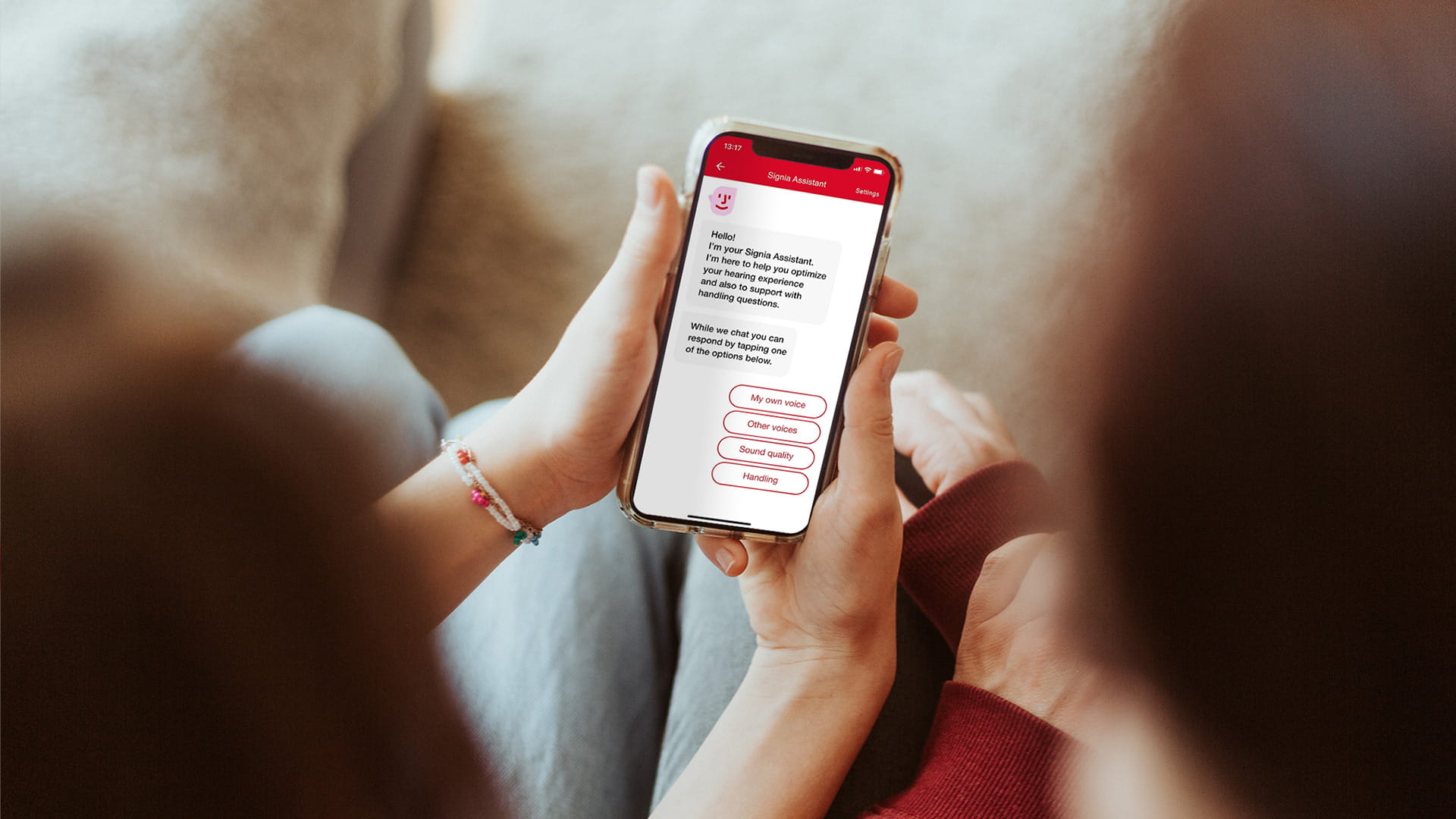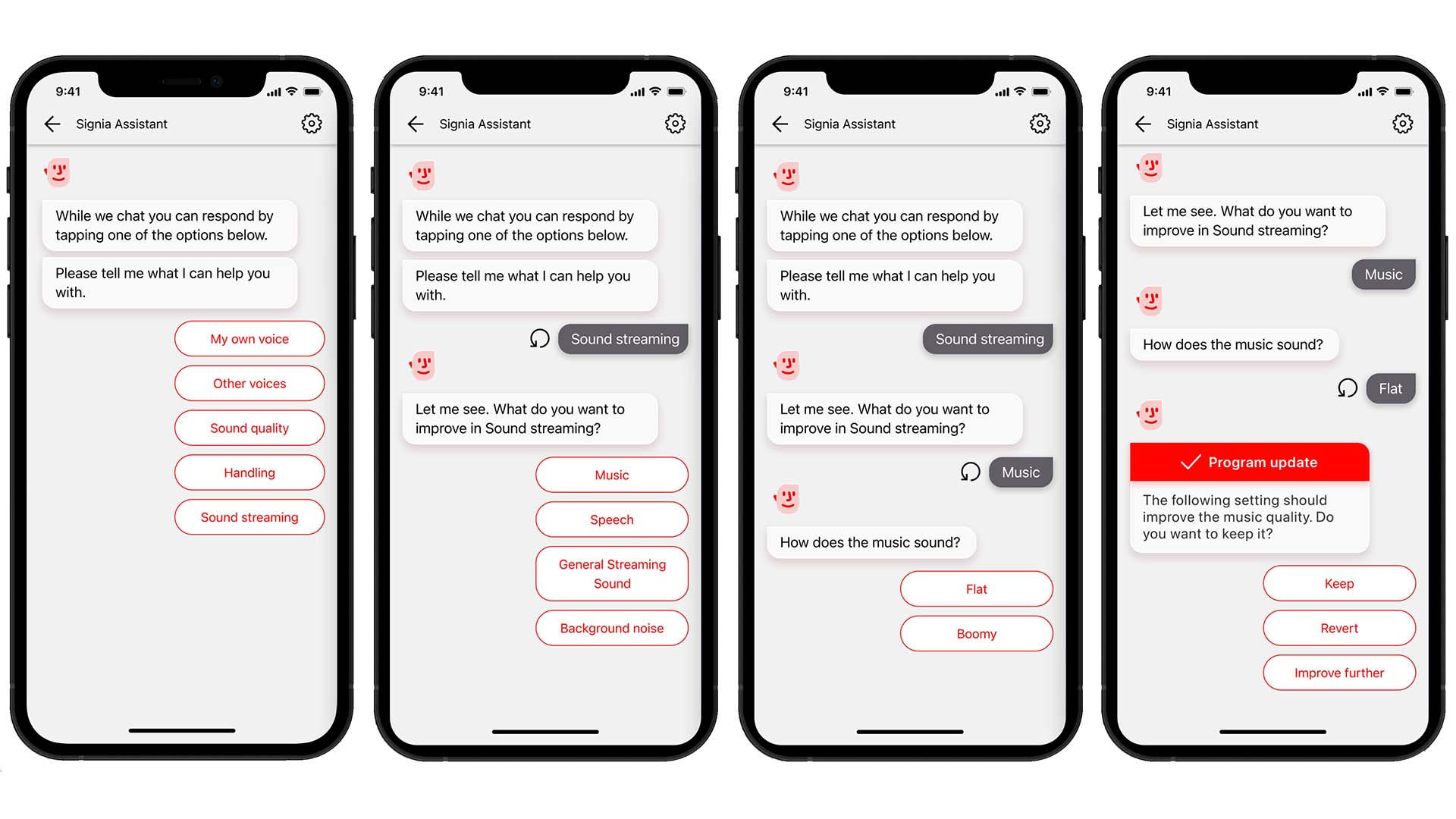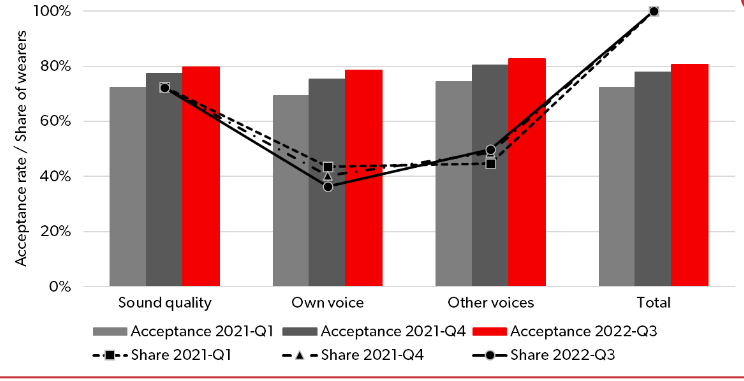
Signia Assistant: How AI is revolutionizing the hearing aid fitting process
Signia is using Artificial Intelligence (AI) to transform the lives of people with hearing loss by allowing hearing aids to be fine-tuned live outside the clinic in real-life situations – and enabling Hearing Care Professionals (HCPs) to review the fine-tuning.
It’s no secret that fitting hearing aids is an individualized process requiring much fine-tuning. But traditional fine-tuning is hampered by the fact that it usually is done in a quiet clinical setting. This allows for accurate measurements but does not represent real-life situations like a noisy restaurant or concert where wearers experience most of their issues.
How it works
Signia Assistant brings the fitting process into the real world with a fine-tuning approach that uses AI to create a highly personalized wearer experience. The fitting appointment provides a good start for wearers, but some often need further fine-tuning of their settings. Traditionally, these wearers had to contact their HCPs and address them long after the original issue occurred.
Signia Assistant changes this by allowing the wearer to report problems and assess fine-tuning when they happen. The HCP can then review these changes in the next appointment.
The AI system uses a deep neural network (DNN) to identify usage patterns and make fine-tuning suggestions to the wearer based on a vast network of data continuously updated via the regular use of Signia Assistant. That means several benefits to both wearers, hearing care professionals (HCPs), and the wearer-HCP partnership.

The basic concept of the Signia Assistant is simple. When the wearer experiences a problem, they can activate Signia Assistant via the Signia app on their smartphone. Signia Assistant will immediately suggest a solution to the problem (i.e., a modified hearing aid parameter setting), which gets programmed into the hearing aids. The wearer can then keep or reject the change or request an additional change to further improve the listening experience.
Signia Assistant uses three types of information to make these suggestions:
- The wearer’s listening situations and reported problems in those situations
- Anonymized data based on others’ use of Signia Assistant
- The individual wearer’s preferences
All changes made by Signia Assistant are available for the HCP to inspect in Signia’s fitting software Connexx, the next time the wearer enters the clinic. This makes the system transparent for HCPs, who can use the data on the wearer’s preferences as a foundation for further counseling during follow-up sessions.
At its core, the Signia Assistant can provide a natural interface for wearers to report issues. Due to its intuitive nature and quick response, it is like having an HCP around 24/7 to fine-tune and personalize hearing aids using real-world data.
What the research shows
In a recent study, we analyzed data from a sample of over 58,000 Signia hearing aid wearers worldwide who have used Signia Assistant.
We investigated the problems reported by wearers and the solutions suggested by Signia Assistant. We then calculated the acceptance rate of the solutions provided, which is defined as the share of the total number of solutions proposed by Signia Assistant that were accepted by wearers and kept in the hearing aids.
The data showed that the overall acceptance rate across all solutions increased to 80.5% in the final quarter analyzed. The results are clear: Signia Assistant can provide widely accepted solutions and improved performance over time, as shown in the figure below.

This image shows the acceptance rates within the three main problem categories (sound quality, own voice, and other voices), the total acceptance rates (across the three categories), and the percentage of hearing aid wearers using Signia Assistant who reported issues within each category. The data are calculated for three separate quarters.
Beyond the limits of fine-tuning methods
Signia Assistant offers several potential benefits to hearing aid wearers and HCPs that go beyond the limitations of traditional fine-tuning methods.
Benefits of using Signia Assistant include:
- Immediate solutions to problems that the hearing aid wearer experiences in any situation, at any time.
- Improvements over time through its machine learning system, providing tailored solutions to the individual wearer.
- A transparent system that enables HCPs to access the wearer’s preferences and use them to provide better counseling during follow-up sessions.
Overall, Signia Assistant is a game-changer for the hearing aid industry, enabling hearing aid wearers to have a more tailored and individualized solution to their hearing challenges.
By improving the traditional fine-tuning methods, Signia Assistant can revolutionize the hearing aid fitting process, ultimately leading to higher acceptance rates and improved wearer satisfaction.